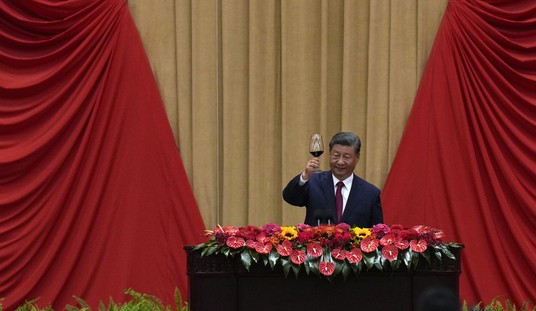The diplomatic tit-for-tat may not yet be finished. In a series of maneuvers that began in December with the expulsion of 35 Russian diplomatic personnel, Russia and the US have traded expulsions and consular reductions. Donald Trump raised the stakes again yesterday, ordering the Russians out of San Francisco and two annexes in DC and New York — and tout suite, too:
The Trump administration ordered Russia on Thursday to close its consulate in San Francisco and two diplomatic annexes, in New York and Washington, in a carefully calculated riposte to Russia’s order that the United States cut its diplomatic staff in Russia.
The tit-for-tat move, which Secretary of State Rex W. Tillerson conveyed to Russia’s foreign minister, Sergey V. Lavrov, in a morning phone call, bore all of the hallmarks of a Cold War-era grudge match. But the administration seemed eager to contain the fallout, casting the move as a straightforward return to diplomatic parity between the countries rather than the latest volley in an increasingly combative relationship.
“In the spirit of parity invoked by the Russians,” the State Department’s spokeswoman, Heather Nauert, said in a statement, the United States would require Russia to close the three offices by Saturday.
That’s two days’ notice, a demand intended to send a point that doesn’t look like “contain[ing] the fallout.” The reason for that deadline is that the US had a deadline today to reduce its personnel in Russia by several hundred people, although many of those will be Russian employees at our consulates and embassies. The late notice forces the Russians to make those changes overnight, an emphasis on American displeasure with the previous Russian order.
On the other hand, the point about parity is well taken. Both countries will now have one embassy and three consulates in the country. The Russians insisted on numerical parity, and … well, now they have it.
Foreign minister Sergei Lavrov says Russia will provide a “tough response” to the latest diplomatic moves:
Russian Foreign Minister Sergey Lavrov said on Friday that Moscow will reply with firmness but still must decide on the precise response.
“We will have a tough response to the things that come totally out of the blue to hurt us and are driven solely by the desire to spoil our relations with the United States,” he said in a televised meeting with students at Russia’s top diplomacy school. …
American counterintelligence officials have long kept a watchful eye on Russia’s outpost in San Francisco, concerned that people posted to the consulate as diplomats were engaged in espionage. The U.S. late last year kicked out several Russians posted there, calling it a response to election interference.
In other words, the Russians may discover a distaste for numerical parity. Unfortunately for them, their next move will disturb that parity, and the US can answer in kind to restore it. This may come down to having only one embassy in each country with a bare-minimum staff to support them, but that will damage Russian interests more than those of the US. Russia needs access to the US economy more than the US needs access to theirs, and that requires a more robust diplomatic and trade presence. The closing of their trade missions in Washington and New York will complicate those efforts at a time when Vladimir Putin can ill afford it.
Russia does have a face-saving way out, which also might explain the last-minute order from the Trump administration. Their new ambassador Anatoly Antonov arrived yesterday, warning against “hysterical impulses.” It’s their chance to offer a reset button and take credit for halting the tit-for-tat moves and stabilizing the US-Russia relationship. We’ll see if they’re crafty enough to take the opportunity.








Join the conversation as a VIP Member